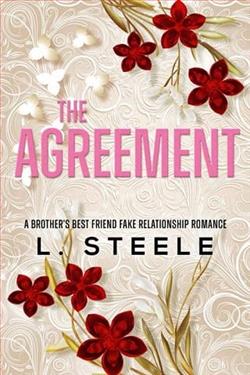Page 83 of Her Last Whisper
They quickly paid for their lunches and rushed back to the forensic lab. Katie kept concentrating on linkage and all the different scenarios it could pertain to.
She needed hard evidence to narrow the suspect pool. In her gut, she knew it had to somehow revolve around the hospital, but she needed to find how these women were connected to one another. There had to be a connection.
McGaven sped into the parking lot and took the first available space.
“Let’s go,” he said as he got out of the car, but Katie was already ahead of him.
It was barelyminutes after the text arrived when they entered the large examination and forensic computer room, and they found John hard at work with evidence from another case. He looked up and smiled. “I think that was record time.”
“When have I ever dawdled when it comes to evidence,” she laughed.
“Did you really just saydawdled?” said McGaven.
“What do you have for us?” she said, ignoring her partner. She remembered to take a breath as she waited in anticipation. She felt a slight tingling in her arms.
John took a seat at a computer and pulled up images with specific graphs. “Each woman, Amanda Payton and Jane Doe, had unidentified stains on their garments that I thought were initially nothing, but we had them analyzed. What I found was very interesting. A combination of chemicals of different amounts were found to have made the stains, and though different, they were consistent with one another.”
“Don’t keep us in suspense,” she said, barely keeping herself calm.
“There were traces of ethylene oxide, formaldehyde, glutaraldehyde, peracetic acid in combination with hydrogen peroxide and latex.”
“What is all that?” asked McGaven.
“Latex gloves?” said Katie taking a guess.
“Mostly these are substances used in disinfectants, sterilizing, and embalming. Basically, all of these things are easily found in and around hospitals and morgues,” John said.
“These two women had a low level of these chemical combinations on their clothes? Their undergarments?” she asked.
“Yes, without a doubt. But I don’t think you’re fully understanding the significance.” He pointed to the screen which showed a graph. “The combination of these chemicals, the amounts and proportions, are nearly identical on both sets of garments.”
“How could that be?” she asked.
“It would mean that both women were exposed to the same combination, from the same source. These chemicals aren’t part of a single product including them; they are a random combination of chemicals. To have this random combination twice would be highly unlikely.”
“Would you be able to know if it was transferred, say from another person who had contact with those chemicals? Or, was it transferred from the victim onto themselves?” Katie’s attention went from Dr. Jamison to Marco Ellis, the morgue technician, and even Dr. Smith.
“It’s possible. The levels were slightly higher on Amanda Payton’s clothes than on Jane Doe, but then she worked at the hospital. More likely, someone else had this combination of chemicals on their clothes, or person, and then somehow they were transferred to each of the women.”
What about Amanda’s hair smelling like sulfur?”
“It’s most likely from a contaminated water source,” he said.
“Meaning?”
“Sometimes you can get that rotten egg smell from drains or old water heaters that have been sealed off and allows bacteria to grow—hydrogen sulfide.”
Katie thought about that for a moment. “The killer rinsed her body, or at least hair, with bacteria contaminated water.” She really wasn’t waiting for an answer, but merely making a statement. “What about Amanda’s body?
“Nothing,” he stated. “She’d been wiped down with some type of alcohol, except they forgot to check her nails.”
“So wait a minute,” she said. “What are the odds of these two women having close to the same amount of a chemical combination on their clothesandcontact with the same contaminated person who attacked them?”
“That would be highly unlikely to be a coincidence,” said McGaven.
John nodded in agreement. “True. I have more.”
“More?” Katie said in disbelief.















